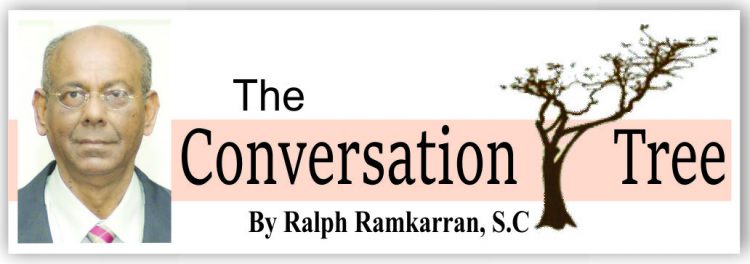
Seecharan’s take on Jagan’s opposition to the West Indian Federation is that it was based on race and maintaining Indian electoral supremacy. Relying on Jagan’s 1956 Congress speech and Eusi Kwayana’s labelling of Jagan as a racist, Seecharan contexualises Jagan’s position as one primarily conditioned by the ethnic factor and completely ignores his political arguments. Directly contradicting this analysis was C.L.R. James, who was strongly supportive of the West Indian Federation. He said that Dr. Jagan “is no petty racialist. He is not counting up how many Indians and how many Africans…and basing his views on that.” James claimed to have “understood” Jagan’s political opposition that the West Indian Federation was a colonial instrument which would further colonial subjugation, but the Trotskyite James did not agree. (Lecture on Federation [West Indies and British Guiana] June 1958 Queen’s College).
Seecharan ignored the multi-faceted nuances of race. James said that the issue of race in relation to the West Indian Federation did not emanate only from Indians “who would be placed in an inferior position” because “Federation would bring thousands of Africans (or people of African descent) from the smaller islands to British Guiana” but also from the African perspective. He continued: “We heard also that the African population of British Guiana was now eager for Federation particularly for the reason that it would bring this reinforcement from the smaller islands, once more establish African numerical superiority, and so check the East Indians.”
George Lamming, writing as late as 1981, reflecting this still prevalent view, observed: “This perception of the Indian as alien and a problem to be contained after the departure of the Imperial power, has been a major part of the thought and feeling of Black West Indians and a very stubborn conviction among the Black middle layers in Trinidad and Guyana. Indian power, in politics or business, has been regarded as an example of an Indian strategy for conquest.” Critics of Jagan have completely ignored the political dimensions of Jagan’s concerns about the Federation as the competing ethnic narratives and how they may have influenced the criticisms of Jagan. Explaining Jagan’s position on grossly incomplete circumstances, and on Kwayana’s exaggerated characterization of Jagan’s 1956 speech, presents a flawed portrait of Jagan.
The rise of the Indian from indentureship was through business and education. This was by no means unique for exploited groups in the colonies. Advances by Indians, as well as by other groups, had to be negotiated with the rulers. The establishment of businesses or production of rice needed permissions of various sorts. The change of religion to Christianity allowed access. These Indians who acquiesced to this system of seeking and obtaining favours, benefits, or nods of approval from the rulers, rose in society and aspired to leadership. This lesson of negotiation and compromise was learnt by aspirants and followed. Emerging out of this historic process were Indian business and professional classes who saw their futures linked to compromise with a system that allowed them material benefits and an elevated role in society. The East Indian Association was their organized representative. For the system to be continually responsive to their needs, they needed a measure of control over it. They had to become part of the ruling class.
Jagan overturned this comfortable trajectory and urged the vast army of poor and exploited to also seek a place at the table. For them to be accommodated meant the dislodgment of, or a smaller share, for those already there. Jagan was never forgiven. Out of this grew the abuse of Jagan as a simpleton, or a “plantation idiot,” who could not understand America, deal with brilliant statesmen, like Burnham, or colonial sophisticates like Sandys, or how his communism harmed Guyana. Indian leaders, opposing the inadequate Jagan they perceived, could not understand why Indians supported him and his “alien” ideology, or why he was mourned at the largest funeral in Guyana’s history, by Indians and Africans alike. Colin Palmer, in his book, “Cheddi Jagan and the Politics of Power,” relates a telling anecdote. Indian politicians, he said, travelled to the sugar estates canvassing for votes from sugar workers, anxious to conclude early enough to return to Georgetown, fearful of the dark catching up with them on the estates. Cheddi and Janet Jagan overnighted on the estates, in the logies, among the sugar workers.
(This column is reproduced with
permission from Ralph Ramkarran’s blog, www.conversationstree.gy)




